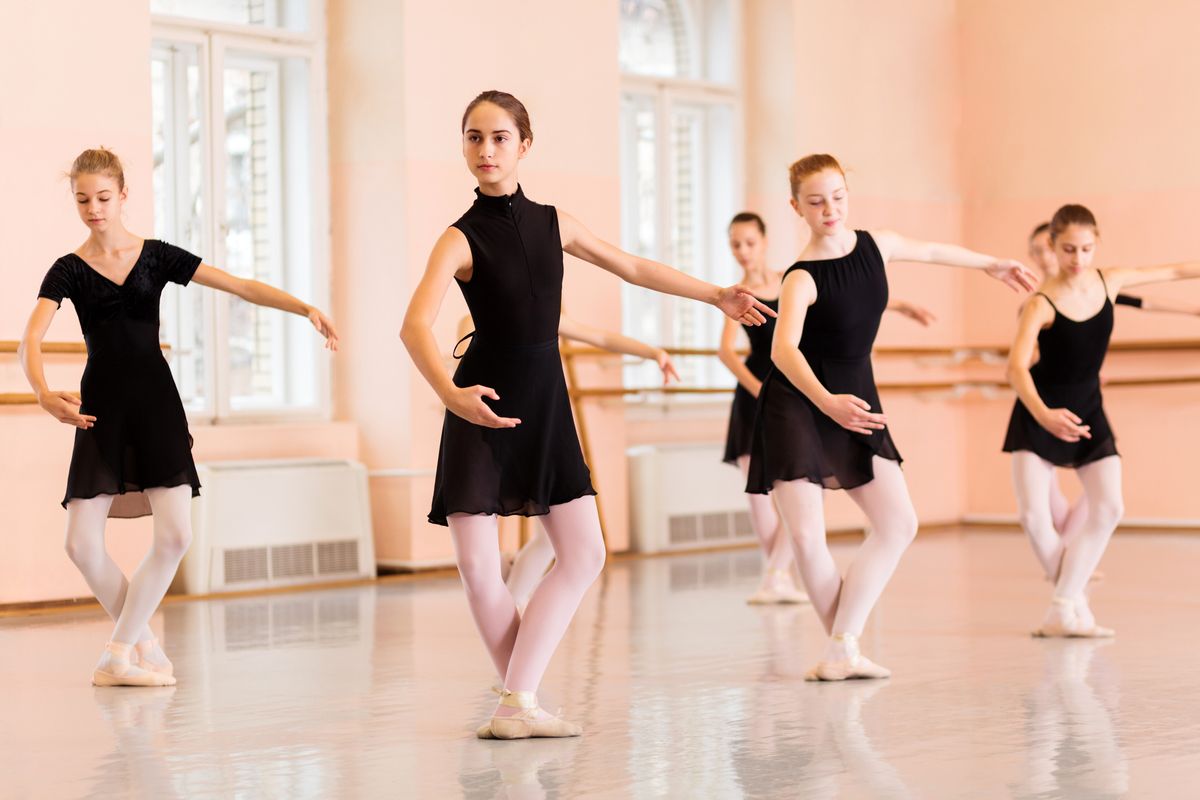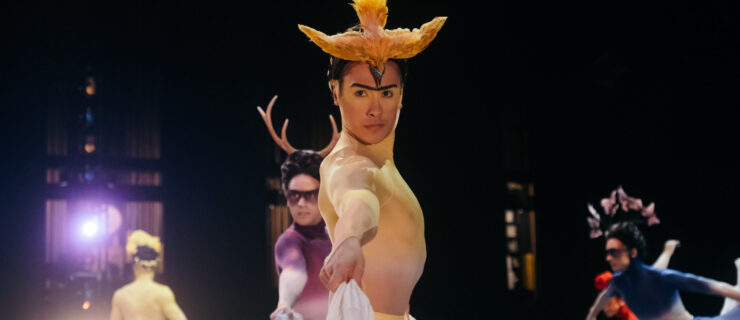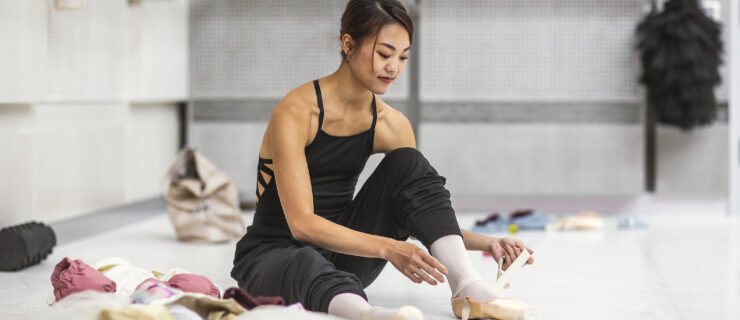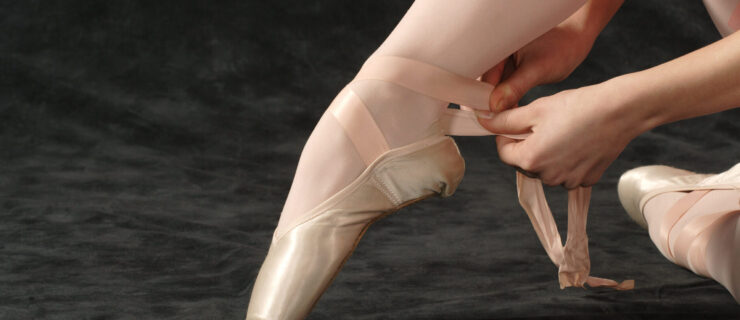Delayed Puberty: Why Not Getting Your Period is a Problem
Former Richmond Ballet dancer Shira Lanyi went through high school without getting her period. “My two older sisters had gotten theirs at 11, so my mom was so worried,” says Lanyi, who didn’t start her menstrual cycle until she was 26. At the time, Lanyi found her delayed puberty to be convenient. “To be honest, I was thankful because I was flat-chested, and that was great for dance.”
But in fact, it’s not okay for puberty and the things it brings (like your period) to be put on hold. The process is dictated by hormones that affect both your body and mind. While these hormones may be vilified for increasing the curves of your body and altering your moods, they make it possible for you to build up adequate bone mass and eventually bear children.
Starting Your Cycle
 Josefin via Unsplash
Josefin via Unsplash
The average girl goes through puberty between the ages of 10 and 14. “If a dancer hasn’t had her period by 16, there is a concern,” says Dr. Selina Shah, a Bay Area sports and dance medicine specialist. “There may be an underlying medical problem with another hormonal system, like the thyroid. But most commonly, the cause tends to be undernutrition.”
Pre-professional students often have intense training schedules and burn more calories than their less active peers. If you’re not consuming enough calories to offset how much you are burning, the hormone that activates your menstrual cycle can’t be released. This energy deficiency can also affect your ability to build bone density. “The years to build bone mass and prevent both osteoporosis and stress fractures happens before age 22,” says Shah.
If your period is delayed, see a physician to help determine why. Your doctor may recommend birth control or other hormone therapies to start your cycle, but Shah believes it’s best to look at nutrition first: “Research has shown that simply putting a person on birth control is not necessarily the best way to jump-start puberty, as it won’t improve bone mass.”
Lanyi, who admits she used to restrict her diet, was put on different hormone therapies, but they didn’t work because she remained underweight. She finally started her cycle when, while rehearsing the demanding role of Odette/Odile, she realized how much fuel her body needed and began eating a higher-calorie diet.
In cases of a nutrition deficit, Shah may recommend increased calcium and vitamin D (since dancers are often indoors) and gives guidelines for calorie intake and proper nutrition. When other medical or psychological issues are present, she’ll work in tandem with specialists such as a pediatrician, gynecologist, endocrinologist, nutritionist and/or a psychiatrist as needed.
Embrace the Challenges
 Courtesy SpMed
Courtesy SpMed
During puberty, you may have to adjust to inconvenient changes: normal weight gain, a bigger chest, wider hips, acne, pubic hair, body odors, plus a new clumsiness that can suddenly emerge as your body develops. In addition, dancers’ bodies are under extra scrutiny, as late adolescence often coincides with their first auditions or early career.
Dr. Nadine Kaslow, a psychologist at Emory University who works with dancers, believes the ballet industry needs to acknowledge that an overly thin body is both hard to achieve with the onset of puberty and an unfair, unrealistic expectation. She encourages dancers to appreciate their new physique: “The more you can learn to dance well with the changes brought by puberty, the better dancer you will be.”
Melissa Sandvig, a freelance dancer and faculty member at Velocity Dance Convention, learned this herself when she went through puberty at 19. “Your body is trying to figure it out and you can’t control that,” says Sandvig. “But you can control your posture and make sure you are doing your best to eat real, healthy foods and cross-train in a mindful, reasonable way.”
She adds that you may need to find a new center of gravity and coordination in order to maintain your technique and maximize your lines. Sandvig advises her students to learn as much as they can about their bodies and posture through a mindful practice like Pilates. She adds that curves can make pleasing lines when the body is properly aligned. “Maybe you just need to work on more abdominal and inner thigh exercises to balance out your hips, or open your shoulder line more in arabesque to account for a fuller chest,” she says.
Changing the Culture
 Getty Images
Getty Images
Physical changes are only one part of the equation: Kaslow notes that questioning authority and even a little rebellion are normal parts of adolescence. “That often doesn’t exist in ballet,” she says. For dance students wanting to succeed in a culture that generally demands obedience and physical uniformity, putting off puberty by restricting their diet may seem more convenient. But disordered eating is never the answer.
“Hormonal changes can affect everything from metabolism to physique to where you hold fat,” says Shah. “If you’re restricting calories, your body goes into a starvation state, which affects your metabolism.” While eating less may seem like a quick fix, fueling your body with whole, nutrient-dense foods is the best way to maintain a developing athletic body.
The ballet world may be slow to change, but many companies are opening up to more diverse body types. “Instead of trying to fit a square peg into a round hole, you’re better off finding a place where your body is appreciated,” says Kaslow. Lanyi adds that it’s not enough to find a company where your body is valued—if you don’t value it too, the support (as she found at Richmond Ballet) falls on deaf ears.
“I regret that I hated my body for so long,” says Lanyi. “Some of the most beautiful dancers, like Marianela Nuñez, are stunning and strong and not overly skinny. That is who you should want to be like: an adult woman.”





